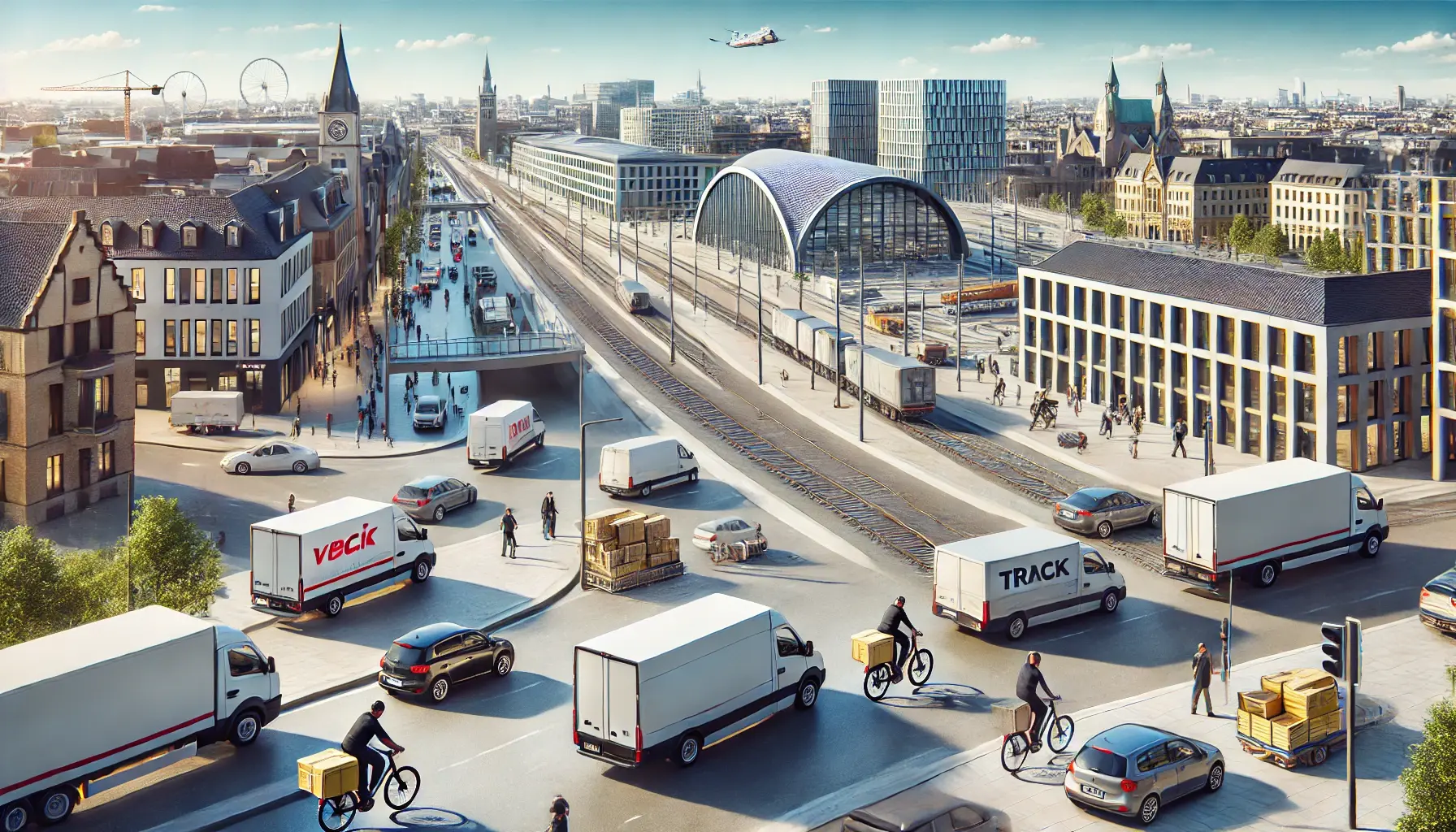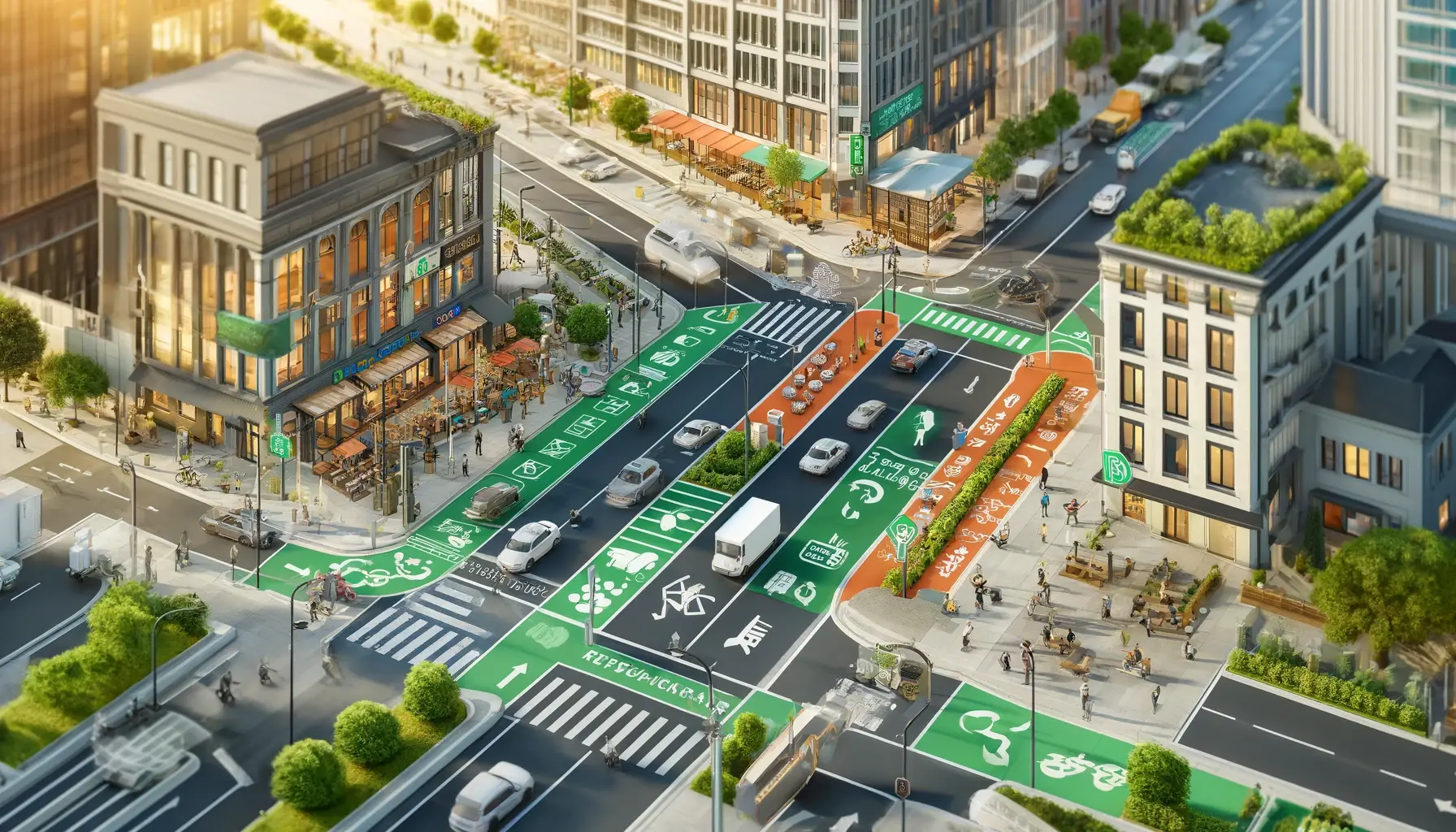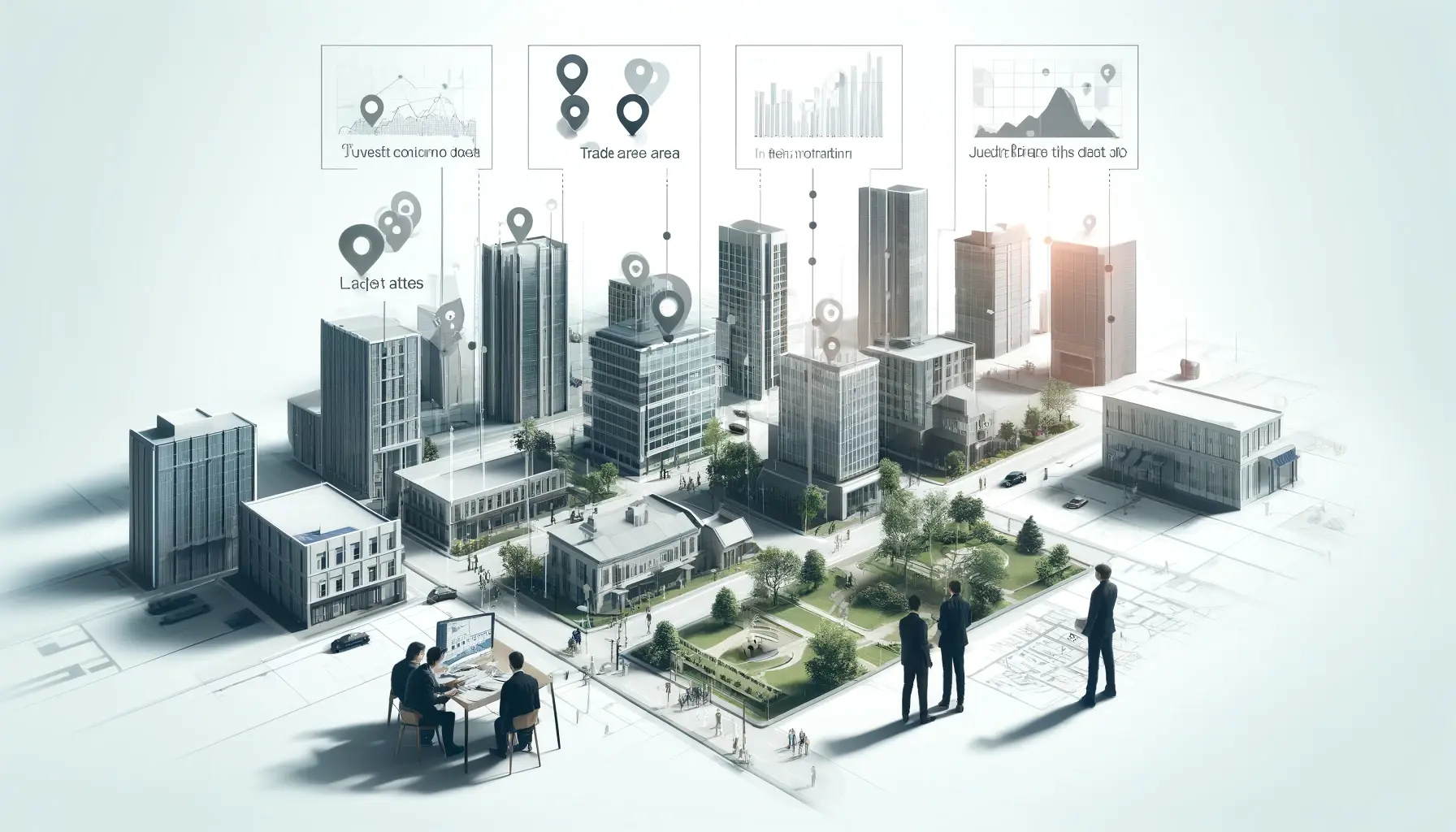Logistics and freight

Optimize your urban logistics: maximum efficiency, minimum impact
Logistics encompass storage, transport flow management and delivery operations for urban customers. It is economically and socially essential, but remains little seen and appreciated because of its environmental and social impacts. In 2015 in Paris, goods flows accounted for 15-20% of traffic, 25% of CO2 emissions, 35-45% of NOx and 45% of fine particles (PM).

CURB MANAGEMENT
Curb management involves digitizing delivery areas and visualizing delivery flows to optimize the use of urban space. This approach makes it possible to better manage parking spaces, reduce congestion and improve the efficiency of urban deliveries.

MUTUALIZATION
Pooling logistics flows, especially when vehicle fill rates are low, maximizes the efficiency of operations. Despite the low volume of goods transported regionally, the lack of visualization tools remains a major challenge to optimizing this mutualization.

SITE PLANNING
Using multiple streams of location data is crucial for commercial property developers to understand catchment areas. Whether for retail sites, offices or industrial units, justifying prices is essential. Consumer data and human mobility can make the difference between closing or losing a deal.

PICK UP &
DROP OFF SITE PLANNING
Logistics players use store networks and lockers as collection points to reduce delivery failures. With the growth of e-commerce, increasing the coverage of these networks is essential to maintain profitability, especially for high-value items. Spatial modeling helps predict demand and understand catchment areas.

